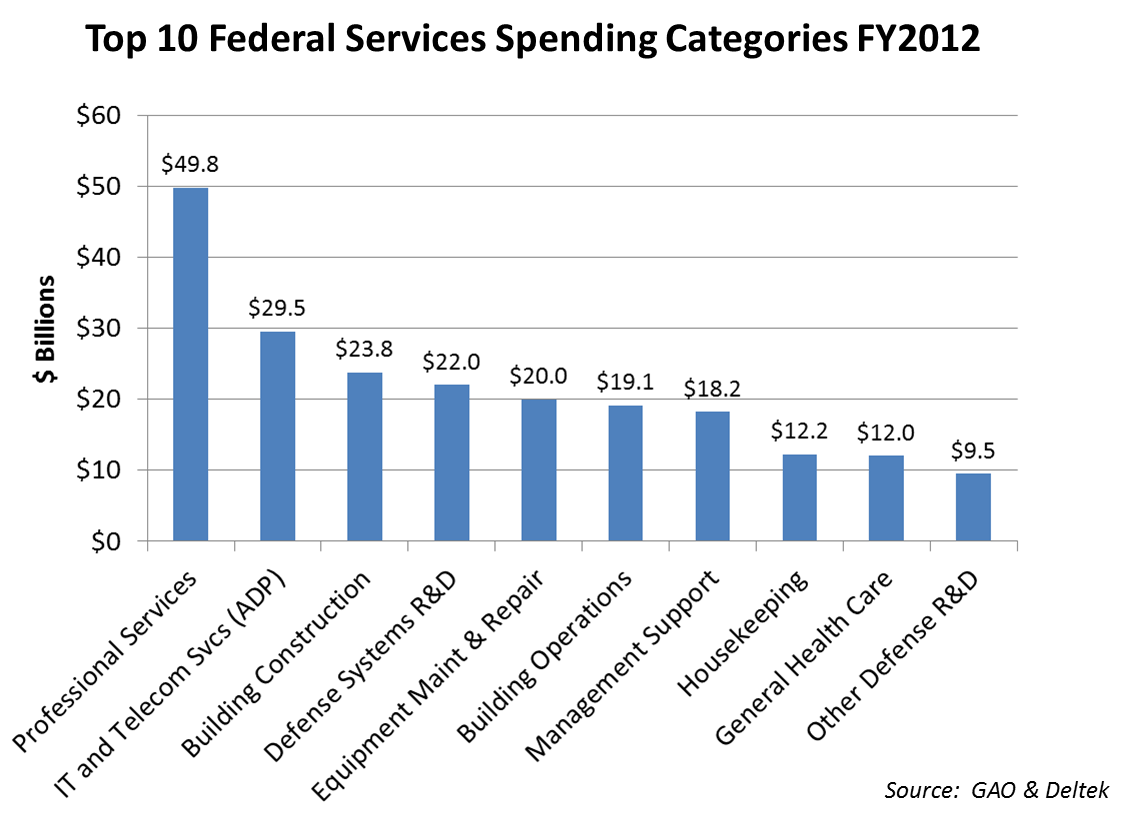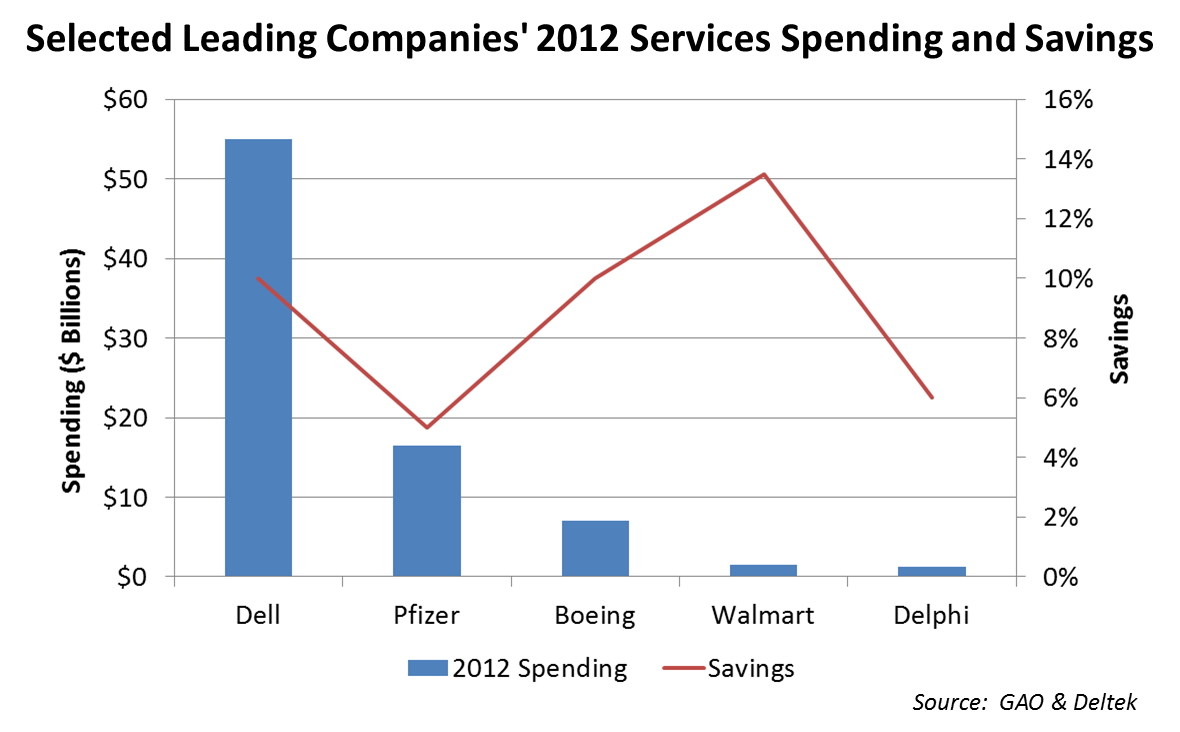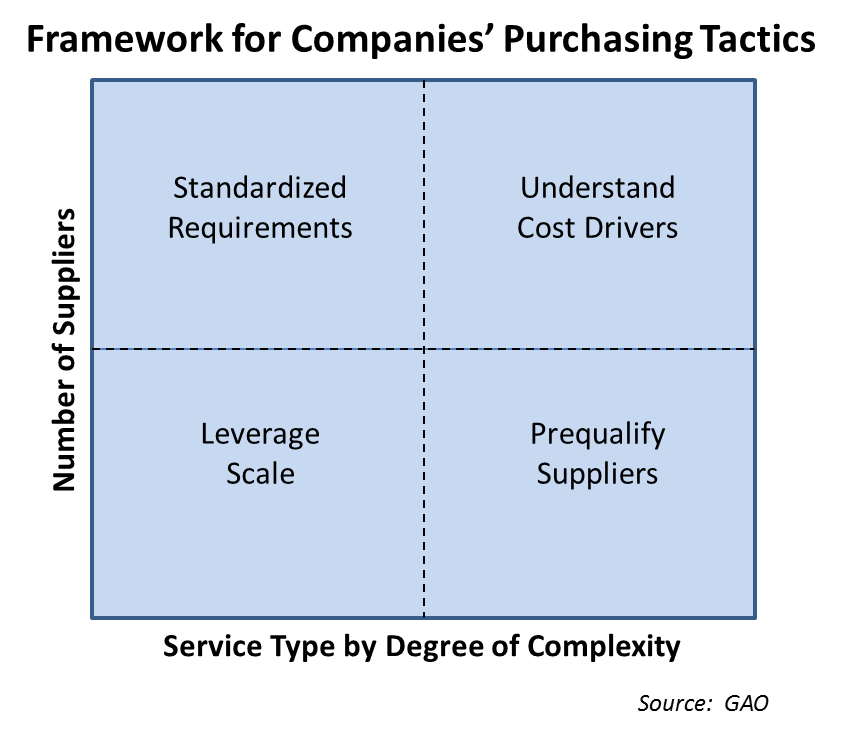Commercial Best Practices for Buying Services Could Save Feds Billions
Published: May 29, 2013
DEFENSEOMBStrategic SourcingVA
A recent GAO report advocates using commercial best practices for strategic sourcing as a method for gaining efficiencies and reducing federal spending on services contracting.
GAO’s recent study, “Strategic Sourcing: Leading Commercial Practices Can Help Federal Agencies Increase Savings When Acquiring Services,”
The federal government spent $307 billion on services in FY2012. The graph below shows the top ten services categories by federal spending levels for FY2012.

GAO examined large commercial companies and their best practices for purchasing services for their enterprise in order to develop recommendations for federal agencies to incorporated similar processes and realize subsequent savings. Officials from the companies GAO profiled reported savings of 4-15% over prior year spending through strategically sourcing the full range of services, such as facilities management, engineering, and information technology.
Similar savings translated to federal agencies would come to $12.3-$46 billion. Federal agencies have sizable opportunities to leverage leading commercial practices to lower costs and maximize the value of the services they buy. GAO reported in September 2012, that large procurement agencies such as DoD and VA only leveraged a small percentage of their buying power through strategic sourcing. GAO also reported these agencies faced challenges in acquiring reliable spending data and analyzing it, applying strategic sourcing to services purchasing, and securing leadership support.
The graph below shows the level of services spending by company interviewed by GAO along with the percentage of realized savings over the prior year.

GAO found that the companies they interviewed followed five foundational principles to leverage spending and market knowledge for more efficient procurement:
- Maintain Spending Visibility
- Centralize Procurement
- Develop Category Strategies
- Focus on Total Cost of Ownership
- Regularly Review Strategies and Tactics
Additionally, companies analyze their spending patterns in terms of two essential variables: the complexity of the service and the number of suppliers for that service. Acquisition of services varies depending on where the services fall in relation to these two variables. The tactics companies use based on the variables fall into four basic categories, depicted in the framework below.

For example, Walmart leverages its company size to compete basic or commodity services that have many suppliers, such as maintenance. But when Dell needs to purchase sophisticated services with few suppliers, such as consulting, it negotiates cost drivers such as labor rates. The framework is dynamic: over the long term, companies seek to reduce complexity and bring in additional suppliers to take advantage of market forces like competition.
GAO recommended that large executive agencies along with OMB, issue guidance, develop metrics, and take other actions to implement buying practices similar to those of the companies profiled. The agencies and OMB concurred.